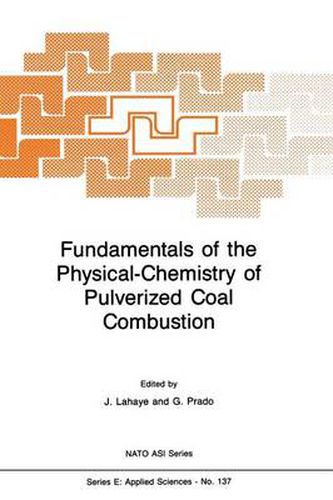Readings Newsletter
Become a Readings Member to make your shopping experience even easier.
Sign in or sign up for free!
You’re not far away from qualifying for FREE standard shipping within Australia
You’ve qualified for FREE standard shipping within Australia
The cart is loading…






This title is printed to order. This book may have been self-published. If so, we cannot guarantee the quality of the content. In the main most books will have gone through the editing process however some may not. We therefore suggest that you be aware of this before ordering this book. If in doubt check either the author or publisher’s details as we are unable to accept any returns unless they are faulty. Please contact us if you have any questions.
The study of coal for the production of energy is certainly not a new area of research. Many research works were carried out to improve the efficiency of industrial and domestic facilities. In the sixties, however, because of the availability and low cost of petroleum, coal consumption decreased and the research effort in this area was minimum. Meanwhile, the situation has totally changed. Considering the reserves of oil and the instability ofregions where they are located, it is becoming absolutely necessary to develop other sources of energy.The major alternative to oil appears to be coal, at least for the near future. Indeed, the reserves known today represent several centuries of energy consumption.!t is therefore becoming urgent to develop efficient and non polluting technologies to produce energy from coal. The main possibilities are : * liquefaction * gasification * directed combustion. Research and development efforts on liquefaction have been considerably reduced because of high cost of technologies involved and poor prospects for the next two decades. Research works on gasification are progressing; it is a promising approach. However, direct combustion either in pulverized coal furnaces or in fluidized beds is the more promising way of expanding rapidly the utilization of coal. These techniques are already used in some facilities but many environmental problems remain, slowing down their development.
$9.00 standard shipping within Australia
FREE standard shipping within Australia for orders over $100.00
Express & International shipping calculated at checkout
This title is printed to order. This book may have been self-published. If so, we cannot guarantee the quality of the content. In the main most books will have gone through the editing process however some may not. We therefore suggest that you be aware of this before ordering this book. If in doubt check either the author or publisher’s details as we are unable to accept any returns unless they are faulty. Please contact us if you have any questions.
The study of coal for the production of energy is certainly not a new area of research. Many research works were carried out to improve the efficiency of industrial and domestic facilities. In the sixties, however, because of the availability and low cost of petroleum, coal consumption decreased and the research effort in this area was minimum. Meanwhile, the situation has totally changed. Considering the reserves of oil and the instability ofregions where they are located, it is becoming absolutely necessary to develop other sources of energy.The major alternative to oil appears to be coal, at least for the near future. Indeed, the reserves known today represent several centuries of energy consumption.!t is therefore becoming urgent to develop efficient and non polluting technologies to produce energy from coal. The main possibilities are : * liquefaction * gasification * directed combustion. Research and development efforts on liquefaction have been considerably reduced because of high cost of technologies involved and poor prospects for the next two decades. Research works on gasification are progressing; it is a promising approach. However, direct combustion either in pulverized coal furnaces or in fluidized beds is the more promising way of expanding rapidly the utilization of coal. These techniques are already used in some facilities but many environmental problems remain, slowing down their development.